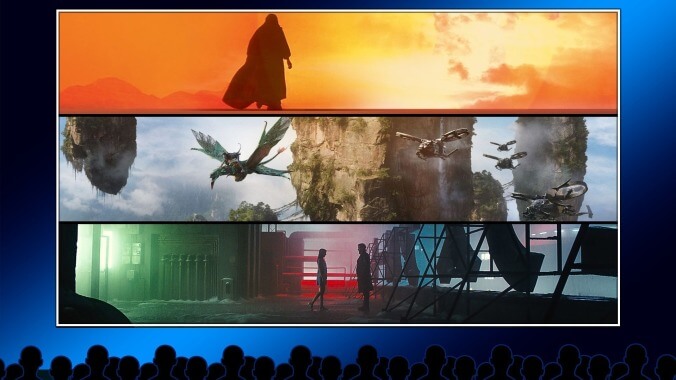20 (or so) movies you need to see on the big screen
From the early days of Cinemascope to Dune: Part Two, filmmakers have wowed us with spectacles that are best experienced in a proper theatrical setting
Film Features Rise
There are artists who work on such a large scale that seeing their art in person for the first time can completely change your impression of a piece, no matter how many times you’ve seen it before in reproduction. Some filmmakers are like that too. Take Denis Villeneuve, for instance, who is currently wowing theatrical audiences with the massive scope of Dune: Part Two. He’s just one of a handful of directors, including Stanley Kubrick, James Cameron, and Christopher Nolan, with big ideas and even bigger executions of them. If you’ve only seen their films on a TV screen, you’re missing out on a unique sensation. They may not have a say in how their films are viewed once they’re out in the wild, but their artistic intent is clear—they were meant to be seen on the largest screen possible in a theater with ideal viewing conditions (minimal stray light, a proper projection system, and state-of-the-art sound, for starters).
You could make the argument that this is the intent behind most movies that aren’t produced specifically for streaming, digital on demand, or, in increasingly rare instances, direct to disc. And while that’s true enough—your favorite film may indeed look better on a big screen—the films we’re singling out here are the ones that lose something vital in the transition from theaters to home viewing. Whether it’s a matter of spectacular scenery, fine detail, or full immersion, seeing them for the first time in the right setting can fundamentally change your relationship to them. You can still watch any of them on a TV screen, a laptop, or even a phone, of course. In some cases, that may be the only way to see them. But if the opportunity ever arises, we recommend treating yourself to what’s sure to be a revelatory experience.